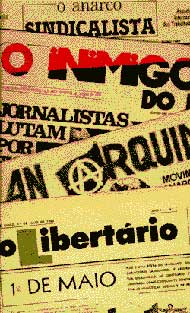Ferrua, Pietro
Saint Michael had a rooster (San Michele aveva un gallo)
A film by Paolo and Vittorio Taviani
Communication. FilmsPISACANE, CarloTOLSTOÏ, Léon (1828-1910)Politics. InsurrectionFERRUA, Pietro (Piero) Michele Stefano (1930 - ....)
Italy, 1976,
color, 87’.
In Italian with English subtitles.
WRITING CREDITS: the brothers Taviani, based on a short story by Leo Tolstoy.
ASSISTANT DIRECTOR: Renoz MICHELETTI;
COSTUMES: Lina MERLI TAVIANI;
SET DESIGN: Giovanni SBARRA;
EDITING: Roberto PERPIGNANI;
CINEMATOGRAPHY: Mario MASINI;
MUSIC: Benedetto GHIGLIA;
MIXING: Nino RENDI;
PRODUCER: Enrico BLASI.
CAST: Giulio BROGI, Renato SCARPA, Vittorio FANTONI, Cinzia BRUNOI, Daniele DUBLINO, Virginia GRIFFIN. PRODUCTION: RAI-AGER FILM.
As real “auteurs”wishing to master all aspects of their art product, the brothers Taviani also conceived the script. Officially it is based on Tolstoy’s “ Divine and Human” but most of characters are modified, events are transposed, and the mystical aspect disappears. Tolstoy had three characters in his novella: Anatoly Svetlogub, Ignaty Mezhenetsky and an old Doukhobor.
The figure of the Old Believer disappears while the other two characters are fused into one: Giulio Manieri, who is condemned to death, then is pardoned and receives a life sentence. The events depicted are quite similar: in Russia the social rebels are Nihilists (Tolstoy mentions Sophia Perovskaya, a well-known member of the revolutionary socialist movement) who think that by killing the tzar and some other oppressors, all social problems can be solved: slavery, injustice, etc.
In the Italian film the insurgents belong to the “Pisacane Group”. Carlo Pisacane is considered to be a hero of the independence struggle in Italy and also a precursor of libertarian socialism.
He wrote some seminal essays but was also a man of action and died fighting. Between that failed expedition and the episode known as the “Banda del Matese”, Italy witnessed the birth of the first phase of anarchism.
The Taviani brothers depict one of such insurrections (the occupation of City Hall in a small town in the countryside and the subsequent destruction of all the titles of property) as the beginning of an agrarian revolution. They are very careful in identifying the rebels through the traditional red and black anarchist flag, even though the detail is historically inaccurate (such a standard had not been adopted yet by the anarchists) but it is psychologically and iconostically correct and it is appropriate to explain what happens later.
The film narration is elliptical as was the literary text. We don’t witness the arrival of the troops, the repression, the arrests. Tolstoy has the innocent Svetlogub condemned to death (he prefers to die instead of betraying the comrade who had hidden explosives in his house) and eventually executed, but the story continues with his comrade and admirer Mezhenetsky, who ends up hanging himself in his cell, dying almost simultaneously with the Old Believer, the mystical character in the story. For the Tavianis three deaths were too many and they condensed the story, concentrating all the conflicts in one character.
Most of the film happens in Giulio Manieri’s cell where he is serving ten years in solitary confinement and where, with extraordinary mastery, they have him act out his hallucinations. The few pages of Tolstoy become a show of craftsmanship with an exceptionally talented actor performing several roles at the same time: his own, and that of some other comrades who are merely imaginary characters.
Moreover, the trip toward Siberia in the short story is here replaced by a similar voyage to Venice and it is in the Venitian lagoon that events precipitate. The protagonist discovers that there is a group of subversives, arrested like him and condemned for the same political reasons. However, he is surprised that despite their familiarity with his name, they no longer approve of his modus operandi. Times have changed, they say, it is no longer with sporadic agrarian revolts that one can change the situation but by organizing the proletariat and leading a more collective struggle. To some, it might sound like a denunciation of the fallacies of anarchism, perhaps it is just a condemnation of a certain conception of anarchism in favor of something more in tune with our era. Before their immense masterpieces KAOS and TU RIDI, the brothers Taviani create here a beautiful “chamber film” in a closed space.
Pietro FERRUA
